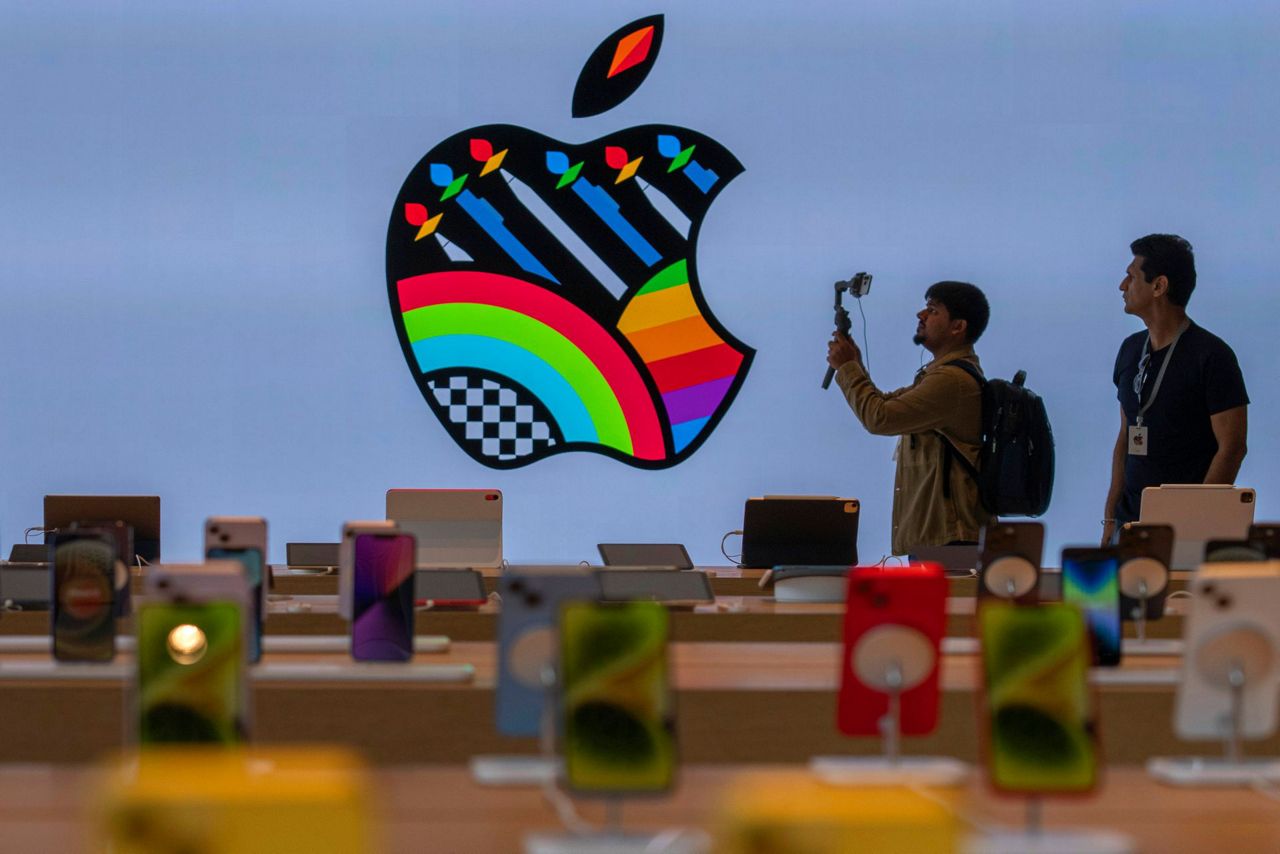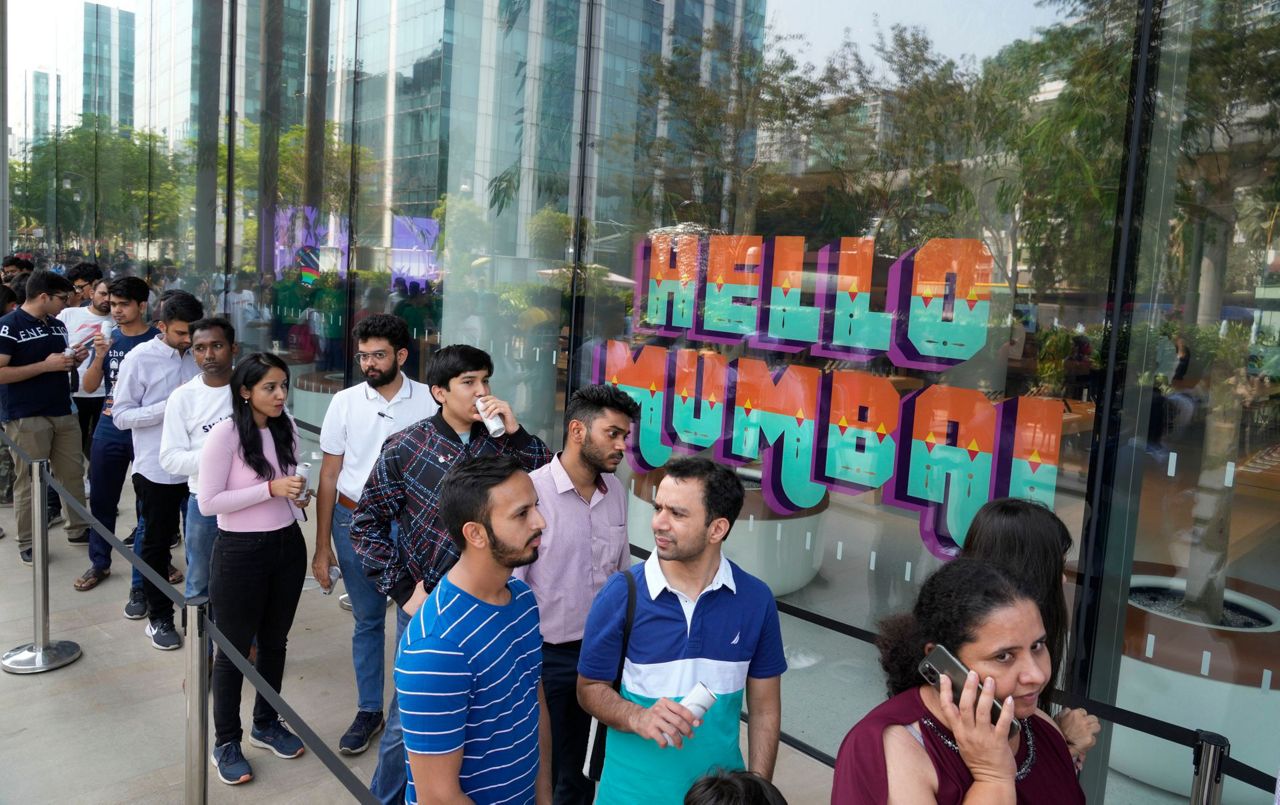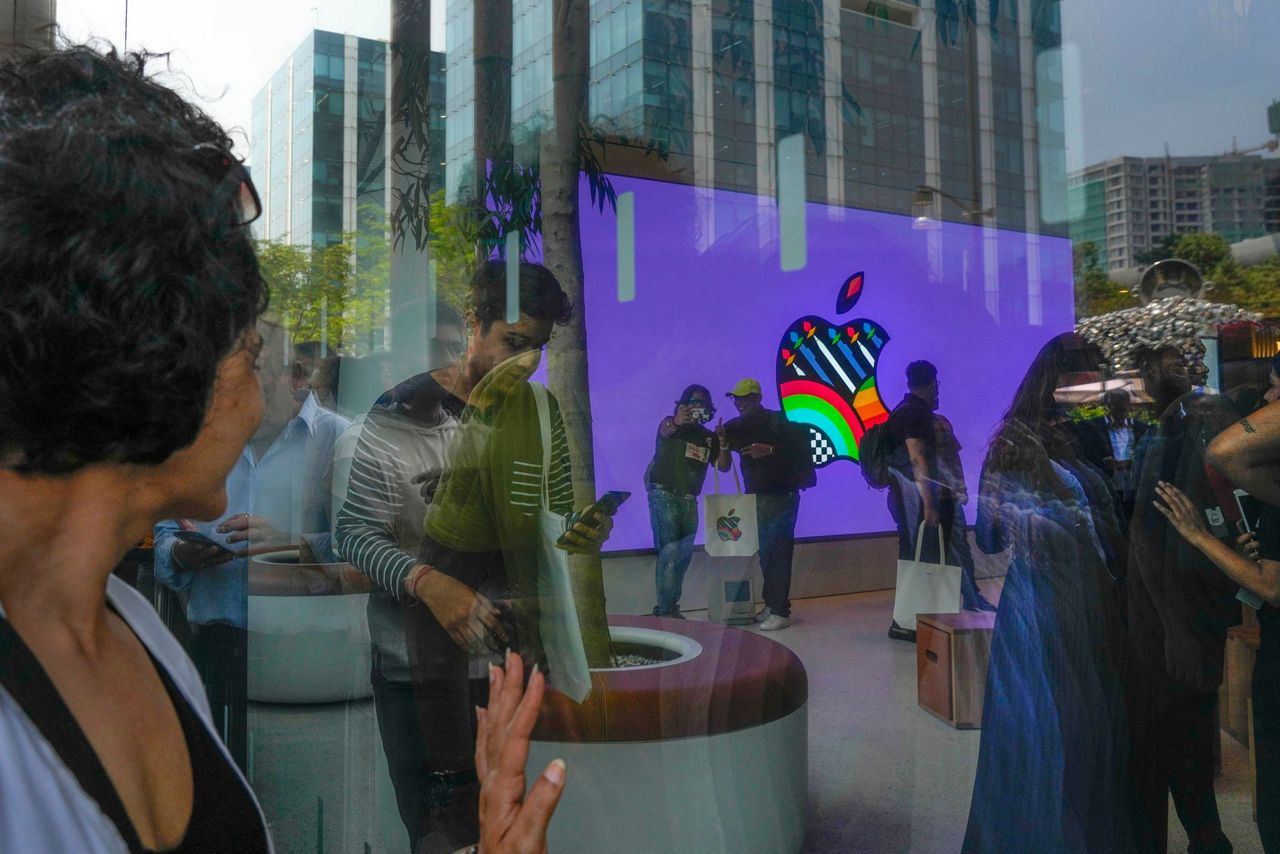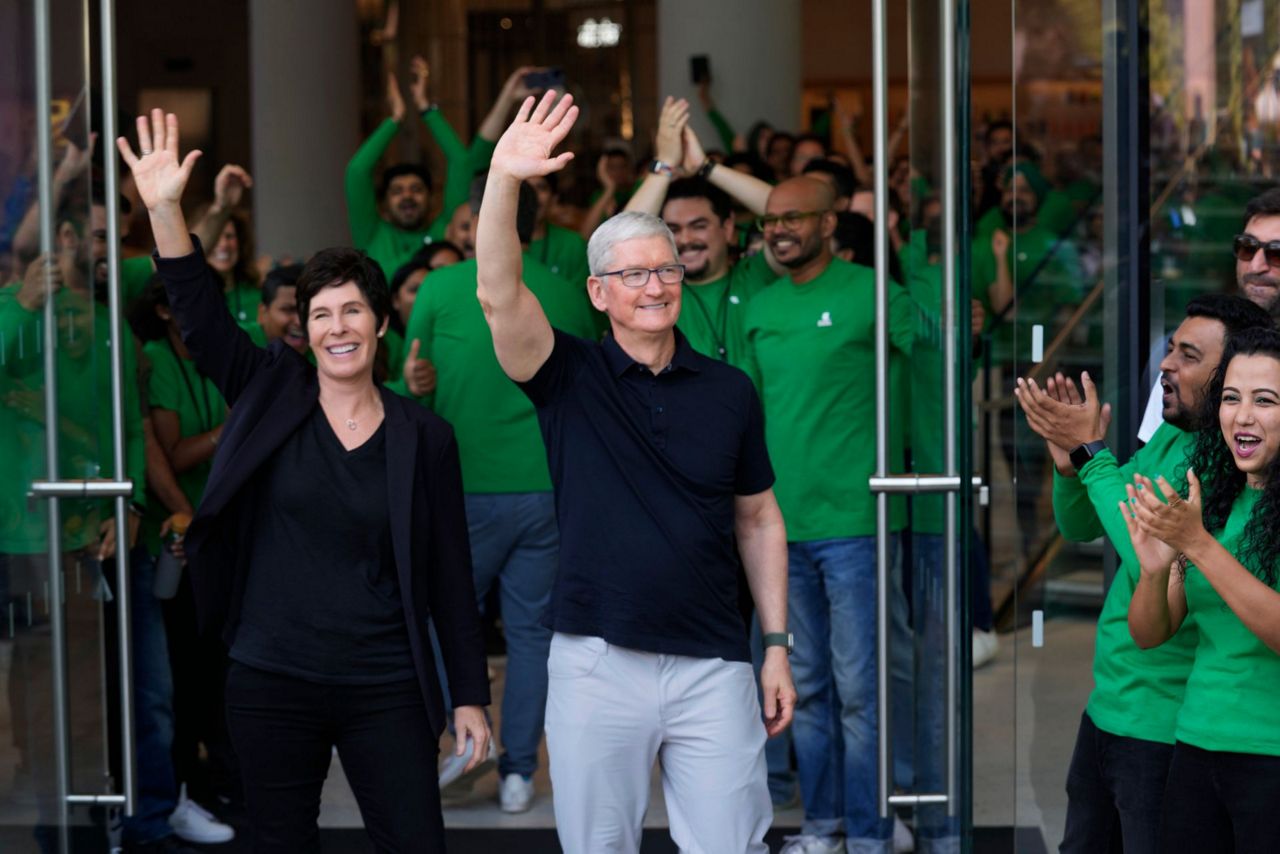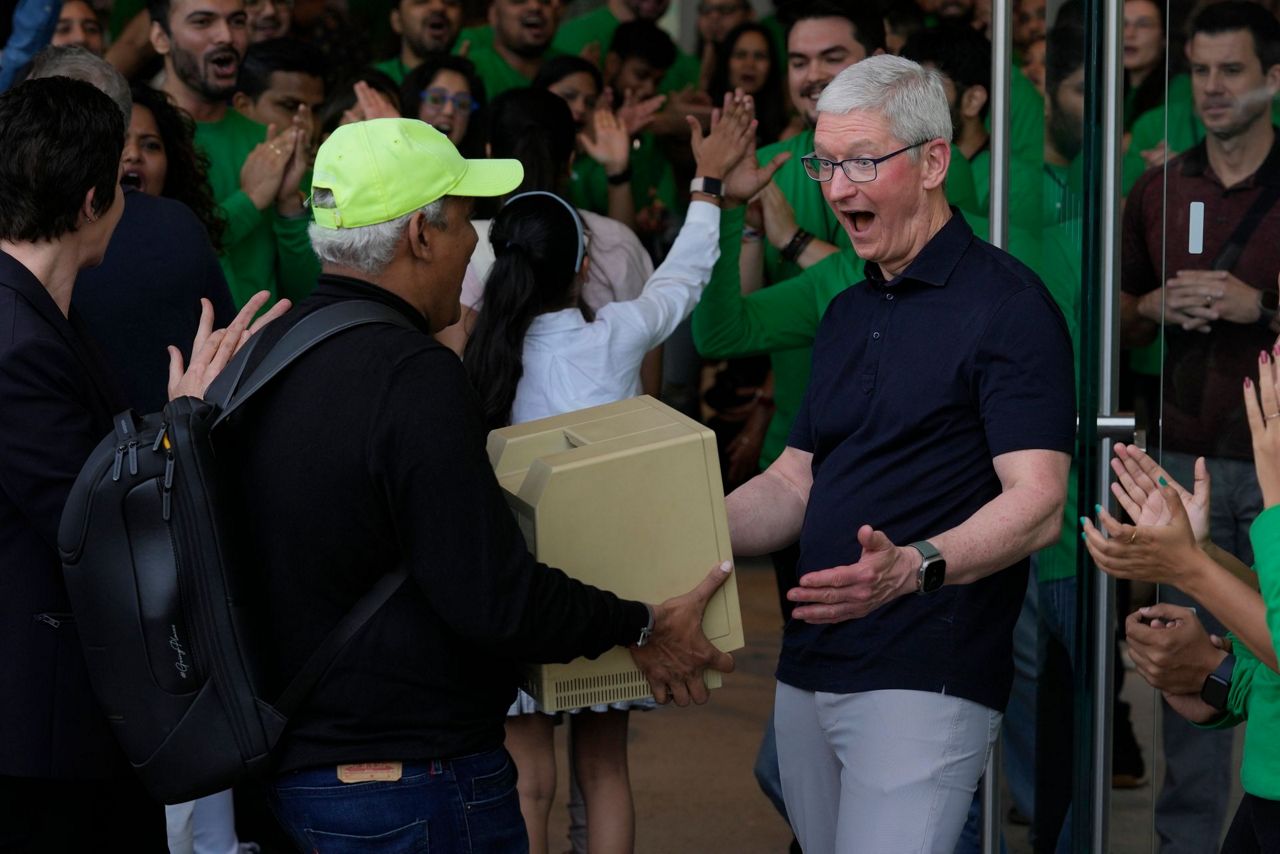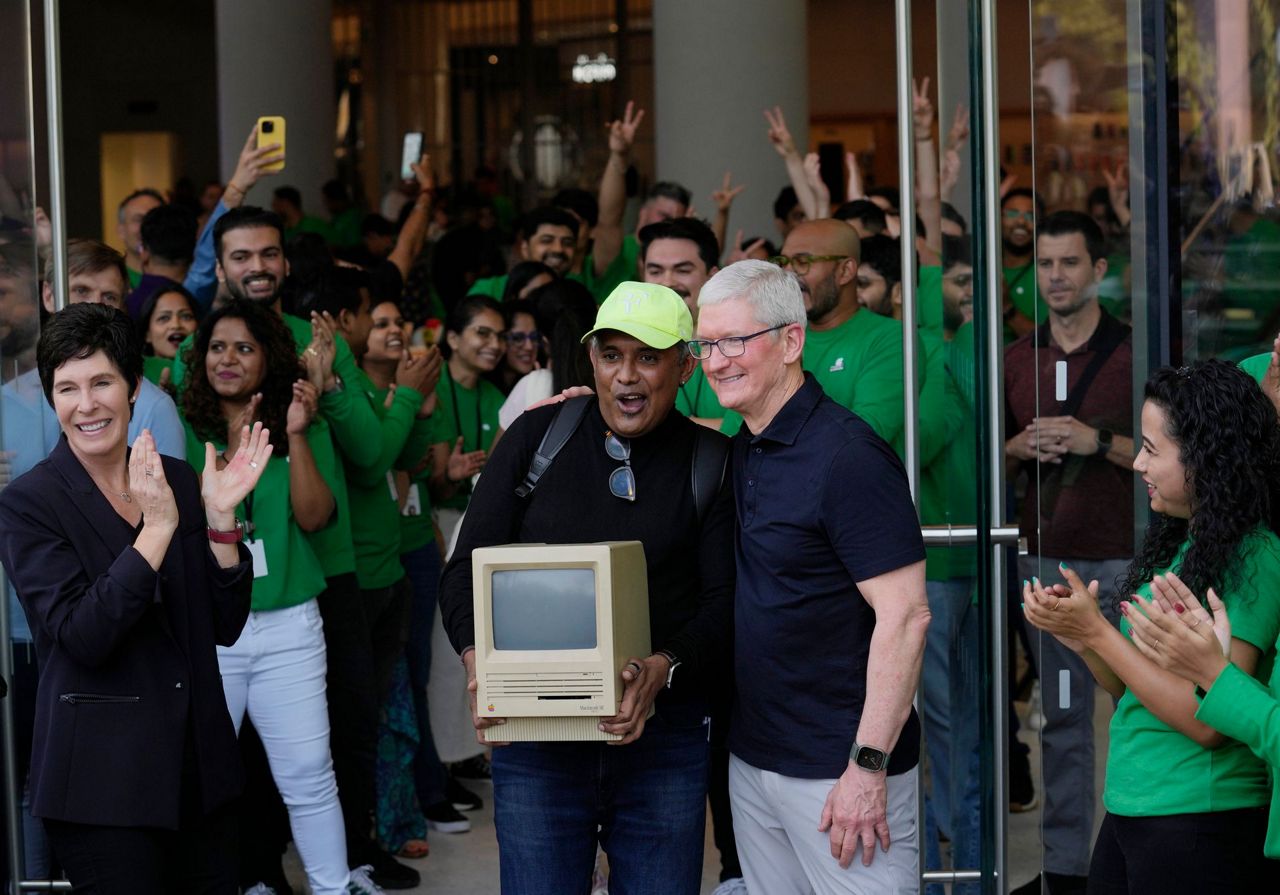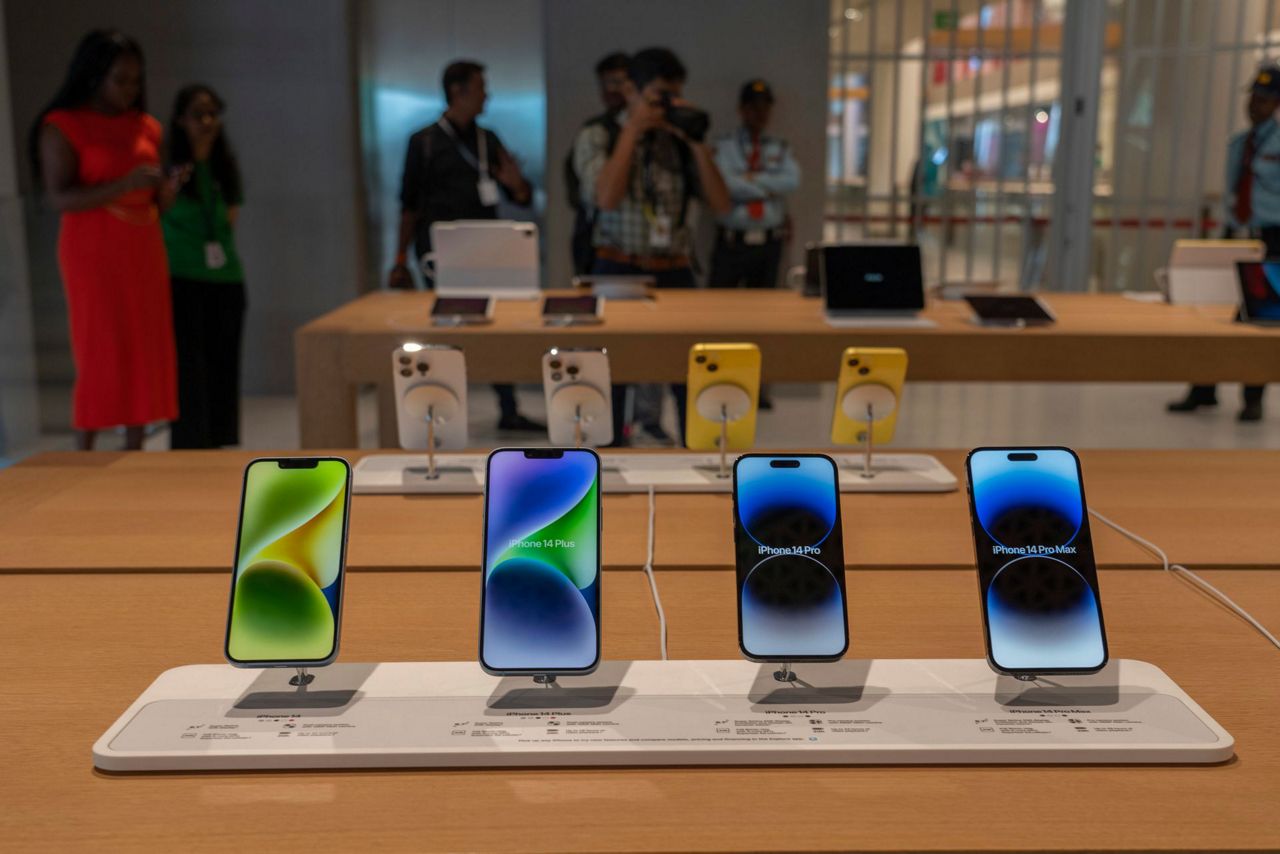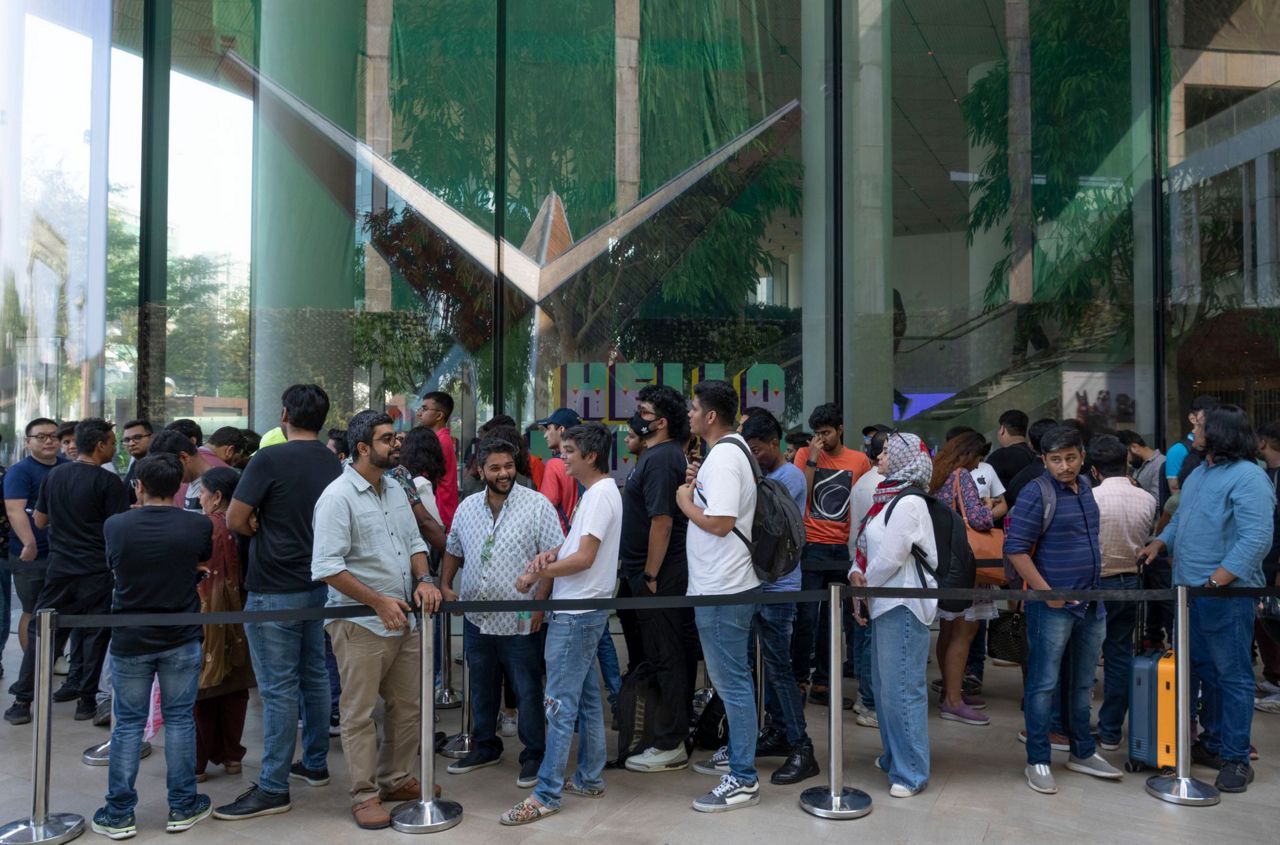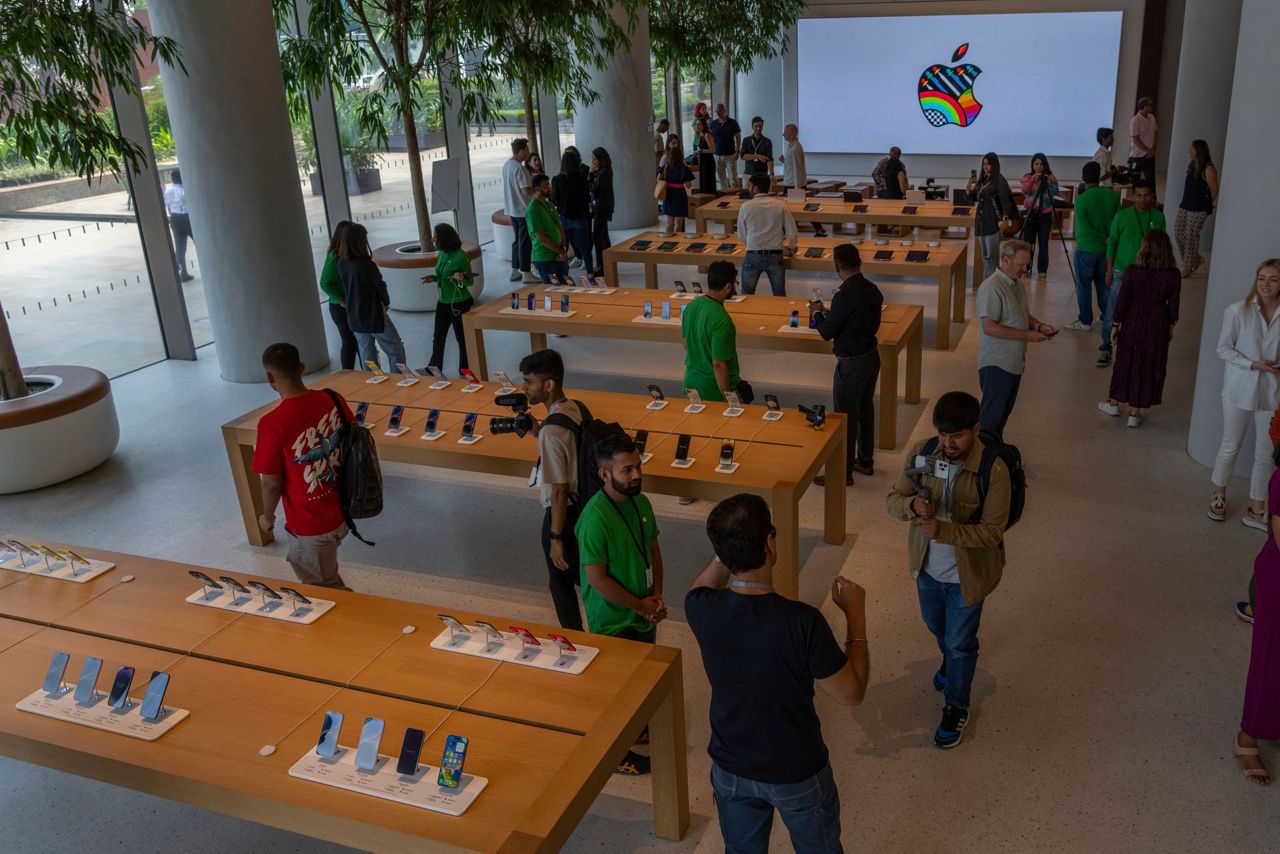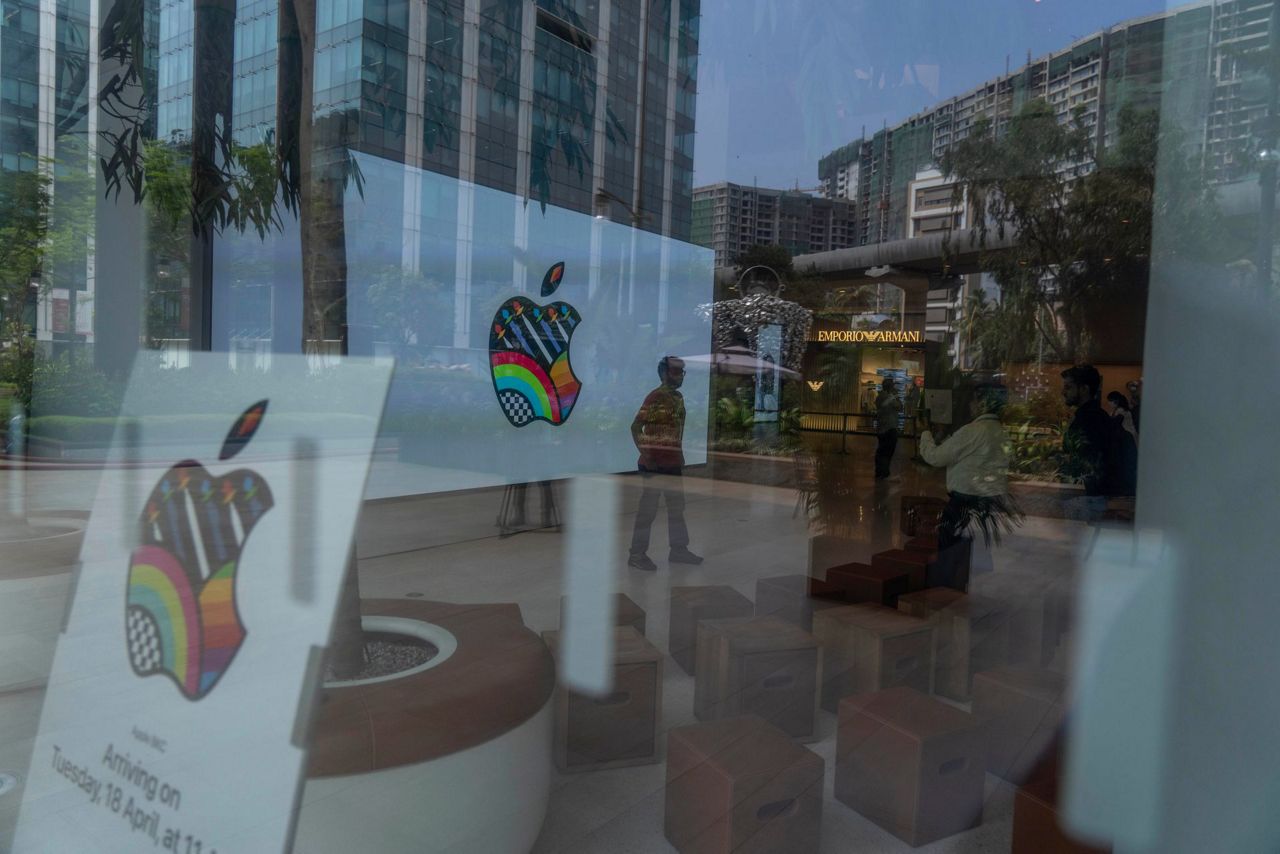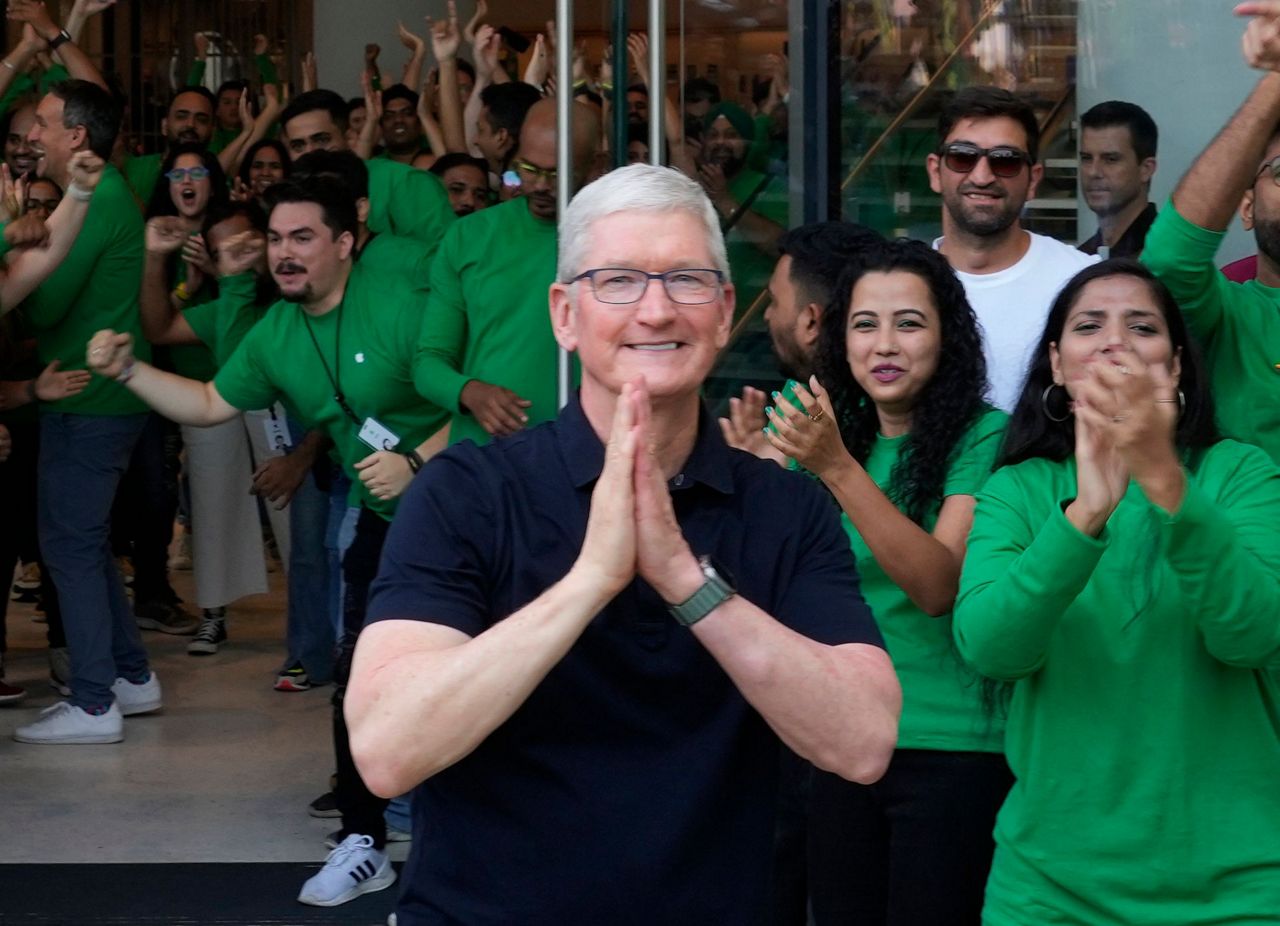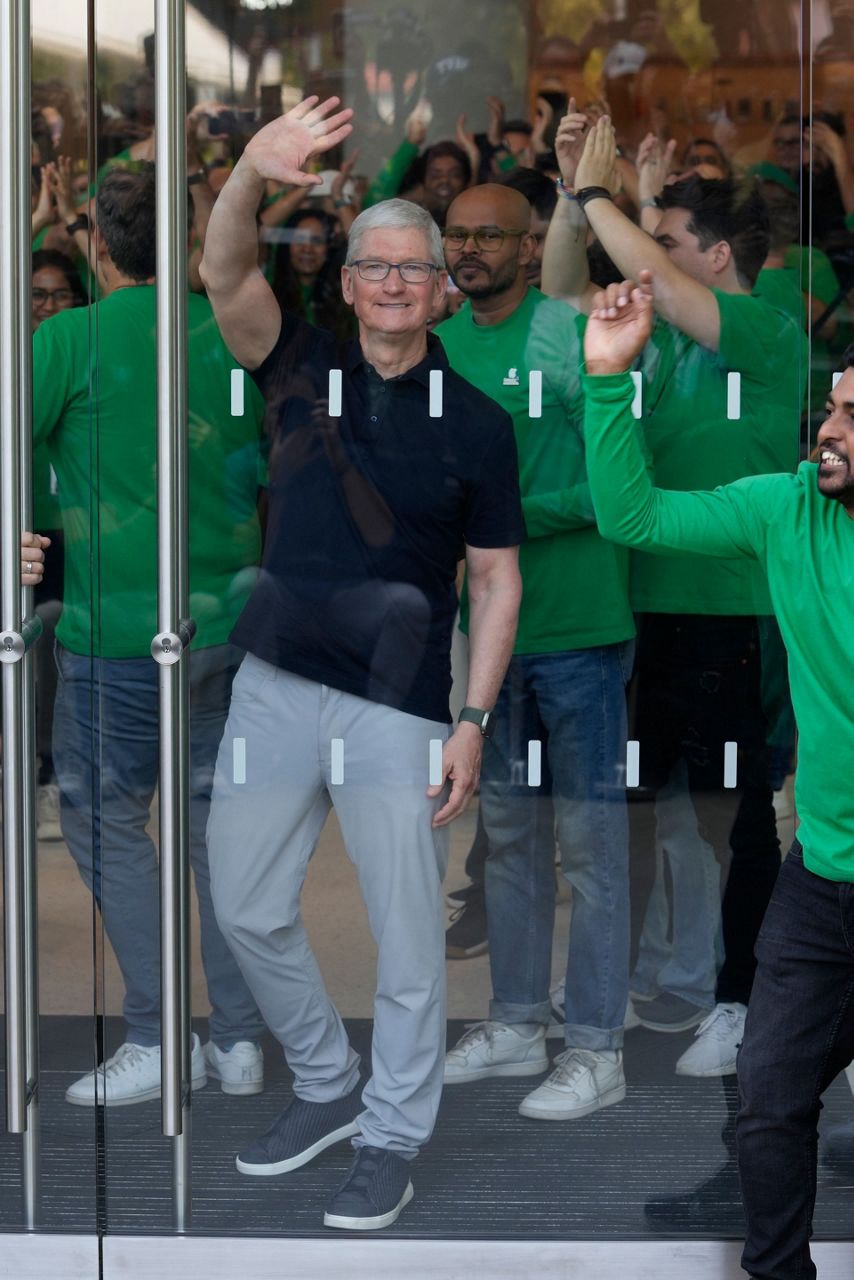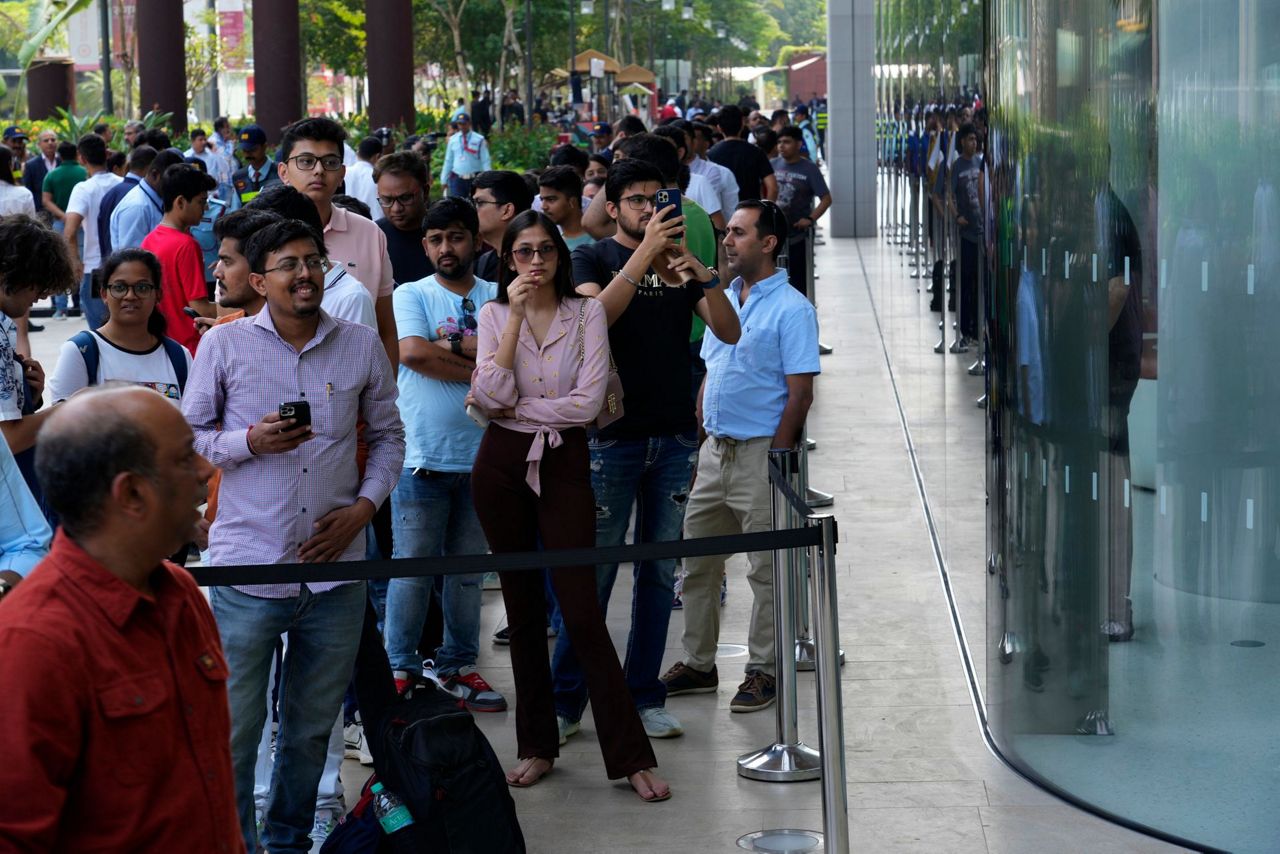NEW DELHI (AP) — Apple Inc. opened its first flagship store in India in a much-anticipated launch Tuesday that highlights the company's growing aspirations to expand in the country it also hopes to turn into a potential manufacturing hub.
The company's CEO Tim Cook posed for photos with a few of the 100 or so Apple fans who had lined up outside the sprawling 20,000-square-foot store in India's financial capital, Mumbai, its design inspired by the iconic black-and-yellow cabs unique to the city. A second store will open Thursday in the national capital, New Delhi.
“India has such a beautiful culture and an incredible energy, and we’re excited to build on our long-standing history," Cook said in a statement earlier.
The tech giant has been operating in India for more than 25 years, selling its products through authorized retailers and the website it launched a few years ago. But regulatory hurdles and the pandemic delayed its plans to open a flagship store.
The new stores are a clear signal of the company's commitment to invest in India, the second-largest smartphone market in the world where iPhone sales have been ticking up steadily, said Jayanth Kolla, analyst at Convergence Catalyst, a tech consultancy. The stores show “how much India matters to the present and the future of the company," he added.
For the Cupertino, California-based company, India’s sheer size makes the market especially encouraging.
About 600 million of India's 1.4 billion people have smartphones, “which means the market is still under-penetrated and the growth prospect is huge,” said Neil Shah, vice president of research at technology market research firm Counterpoint Research.
Between 2020 and 2022, the Silicon Valley company has gained some ground in the smartphone market in the country, going from just about 2% to capturing 6%, according to Counterpoint data.
Still, the iPhone’s hefty price tag puts it out of reach for the majority of Indians.
Instead, iPhone sales in the country have thrived among the sliver of upper-middle-class and rich Indians with disposable incomes, a segment of buyers that Shah says is rising. According to Counterpoint data, Apple has captured 65% of the “premium” smartphone market, where prices range up from 30,000 rupees ($360).
In September, Apple announced it would start making its iPhone 14 in India. The news was hailed as a win for Prime Minister Narendra Modi’s government, which has pushed for ramping up local manufacturing ever since he came to power in 2014.
Apple first began manufacturing from India in 2017 with its iPhone SE and has since continued to assemble a number of iPhone models from the country.
Most of Apple’s smartphones and tablets are assembled by contractors with factories in China, but the company started looking at potentially moving some production to Southeast Asia or other places after repeated shutdowns to fight COVID-19 disrupted its global flow of products.
“Big companies got a jolt, they realized they needed a backup strategy outside of China — they couldn’t risk another lockdown or any geopolitical rift affecting their business,” said Kolla.
Currently, India makes close to 13 million iPhones every year, up from less than 5 million three years ago, according to Counterpoint Research. This is about 6% of iPhones made globally — and only a small slice in comparison to China, which still produces around 90% of them.
Last week, India’s Commerce Minister Piyush Goyal said the government was in regular touch with Apple to support their business here and that the company had plans to have 25% of their global production come out of India in the next five years.
The challenge for Apple, according to Shah of Counterpoint, is that the raw materials are still coming from outside India so the tech company will need to either find a local supplier or bring their suppliers, based in countries like China, Japan and Taiwan, closer to drive up production.
Still, he's optimistic this target could be met, especially with labor costs being lower in India and the government wooing companies with attractive subsidies to boost local manufacturing.
“For Apple, everything is about timing. They don’t enter a market with full flow until they feel confident about their prospects. They can see the opportunity here today — it’s a win-win situation,” Shah said.
___
This story corrects the spelling of the Apple CEO's name. It is Tim Cook, not Tim Cooke.
Copyright 2023 The Associated Press. All rights reserved. This material may not be published, broadcast, rewritten or redistributed without permission.



